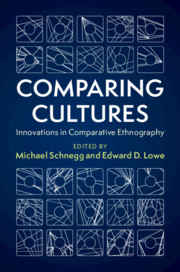Book contents
- Comparing Cultures
- Comparing Cultures
- Copyright page
- Contents
- Figures
- Tables
- Contributors
- Introduction
- Part I Binary Comparisons
- 1 Thinking with Comparison in the Anthropology/Historical Anthropology of Migration
- 2 Comparing Tangerines
- 3 A Comparative Ethnographic Study of Suicide Epidemics in Two Pacific Island Societies
- Part II Regional Comparisons
- Part III Distant and Fluid Comparisons
- Index
- References
1 - Thinking with Comparison in the Anthropology/Historical Anthropology of Migration
from Part I - Binary Comparisons
Published online by Cambridge University Press: 08 May 2020
- Comparing Cultures
- Comparing Cultures
- Copyright page
- Contents
- Figures
- Tables
- Contributors
- Introduction
- Part I Binary Comparisons
- 1 Thinking with Comparison in the Anthropology/Historical Anthropology of Migration
- 2 Comparing Tangerines
- 3 A Comparative Ethnographic Study of Suicide Epidemics in Two Pacific Island Societies
- Part II Regional Comparisons
- Part III Distant and Fluid Comparisons
- Index
- References
Summary
How do anthropologists think with comparison? This is the core question addressed in this chapter. I draw on examples from my own research to show how comparison, as an epistemological stance, suggests not only questions to be explored during research but also avenues of interpretation and insight during analysis. I argue that comparison (1) helps to illuminate the significance of context in explanation; (2) makes similarities and differences more visible and hence deepens and extends our understanding of critical social and cultural processes; and (3) addresses the tension between the general and the particular, a tension fundamental to anthropology throughout its history. The chapter focuses on three projects where I used comparison to study migrant populations. These projects highlight the role of comparative thinking in relation to distinct scales or units of analysis: different national contexts (Portugal and Ireland), different regions of immigration settlement (French Canadian immigrants in the eastern and midwestern United States), and between immigrant populations of different national origins (Indians and Vietnamese) who have settled in one US city.
Keywords
- Type
- Chapter
- Information
- Comparing CulturesInnovations in Comparative Ethnography, pp. 23 - 44Publisher: Cambridge University PressPrint publication year: 2020



